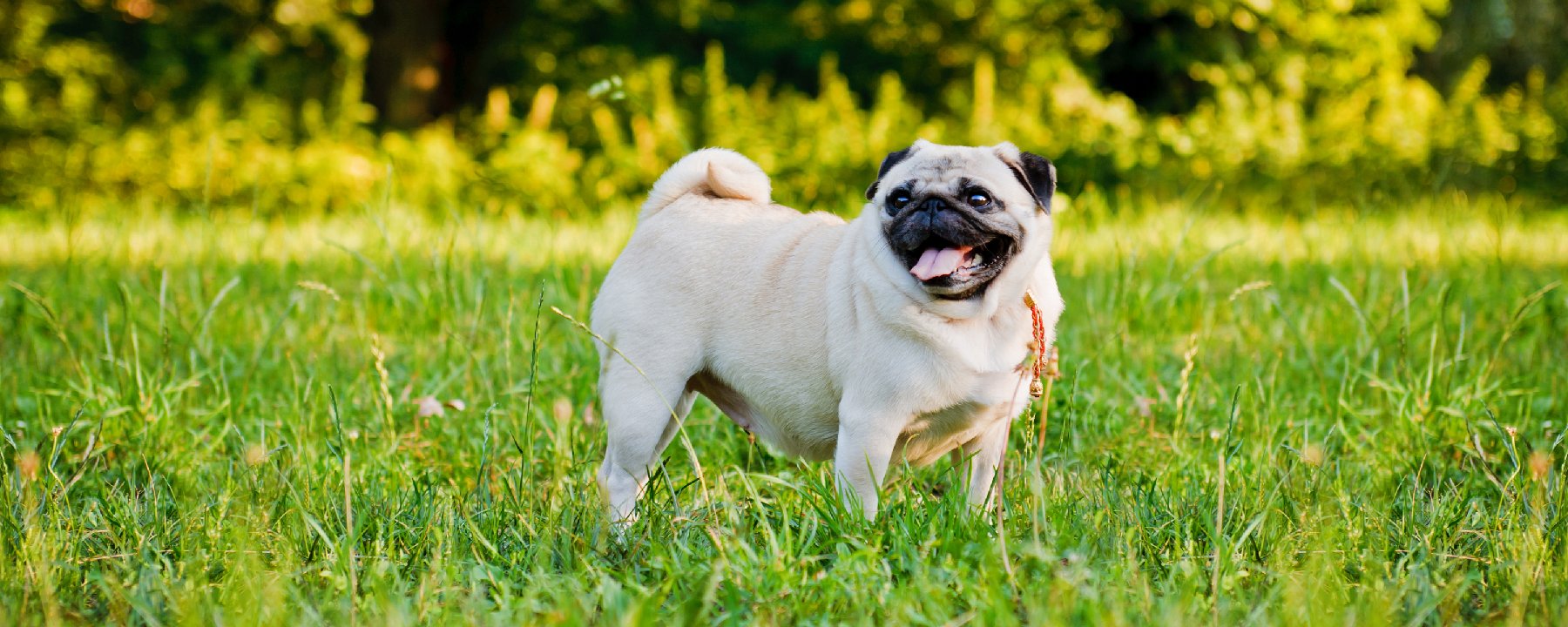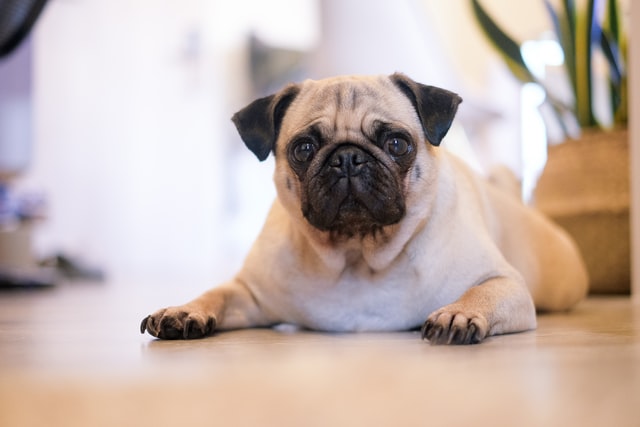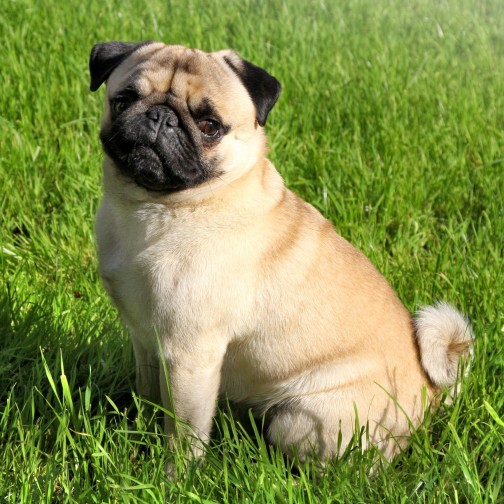
Pug
Posted: 02/14/2023 | BY: Content Writer
Pug Dog Breed Profile
Pet profile
Best suited to quieter households with smaller living spaces.
- Small (25cm to 28cm)
- Typically weighing between 6kg and 8kg
- 12 to 15 years life expectancy
Pugs are the perfect balance between playful and docile. They are extremely loyal dogs and will always be glued to their owner’s side.
A great pet for the family; they are keen for plenty of attention alongside regular nap-times! If you are looking for a companion in life, the Pug would be ideal for you and your family.
Pugs are known for desiring plenty of love and affection, an evening on your lap with plenty of cuddles will keep your Pug happy! However, they aren’t always so laid-back, they are playful and fun-loving animals that will keep anyone entertained.
Pugs are easy-going and make great apartment dogs, pack dogs, or family dogs. They like to please their owners, are relatively easy to train and get along with almost anyone.

History of Pugs Dogs
The Pug first originated in China and was an exclusive breed; often prized by Chinese Emperors. It wasn’t until the 1500s that Dutch traders brought the breed to Europe.
Since then, they have gone from strength to strength in their popularity across the entire world and now hold a firm place in the American Kennel Club.
Pugs became the official dog of the House Of Orange in Holland. A pug saved the life of the Prince by barking to warn him of an attack.
The pug breed has had many names in various eras and places. For example, they are called ‘Mopsi’ in Finland or ‘Mophonds’ in the Netherlands.
Today there are even mixed breeds of pugs such as puggles (beagle + pug) or chugs (chihuahua + pug).
Characteristics of Pug Dogs
Pugs are small dogs that weigh 14 to 18 pounds and have a lifespan of 15 years. The pug breed can come in three colors: silver or fawn with a black muzzle or all black. Pugs have an adorable curled tail.
Pugs are a flat-faced breed with a short muzzle, can have breathing problems, and generally do not do well in humid weather.
Pugs have a short coat, which is usually fawn or black in color and doesn’t require excessive grooming needs. However, even though their fur is short, Pugs are known to shed a lot, during the warmer months. So, keeping on top of shed hair in the home will be needed.
Like many other dogs with similar facial features, Pugs can develop respiratory health issues and the folds in their face will require care and need to be kept dry after bathing.
Adopting A Pug From A Breeder Or Rescue
When adopting a pug, it is recommended to adopt a pug puppy from a recognized American Kennel Club or Pug Dog Club breeder. This will reduce the chance of genetic health issues.
You can also adopt from pug rescues or even animal shelters.
Exercise And Nutrition of Pug Dogs
Pugs, despite being docile creatures, are often very stubborn when it comes to walking and exercise; they will often keep going past their limits and as an owner you should get to know when your dog has had enough and needs to take a break.
As puppies, Pugs shouldn’t be exercised excessively, sticking to regular playtimes will be enough, to begin with. After that, two 20-minute walks each day and access to your backyard will suffice in keeping your dog healthy and happy.
Upon welcoming your new Pug to the family, it is important to take on board the breeder’s advice regarding how and what to feed them. Ensuring consistency with regard to your dog’s diet is essential, as changes in their diet or routine can cause discomfort and stomach problems.
As a puppy, your Pug should be fed four times a day, then as they get older this can be reduced to twice daily (after 6 months for most Pugs).
You will want to monitor your pet’s weight because a pug may become sedentary with age and become obese.
Common Health Problems And Illnesses Of Pugs
Because Pugs can be vulnerable to certain illnesses, it is important to get dog insurance for your pug as soon as possible to ensure that any conditions that develop in later life are covered in your policy.
Dry eye in dogs occurs when they aren’t producing enough tears for their eyes to stay moist. If you suspect your dog has dry eye, take them to your vet and they will determine a treatment type best suited to your pet. Pug’s eye type makes them potential victims to a variety of eye-related issues, such as:
- Pigmentary keratitis – this is a condition that shows black spots on the cornea, if left untreated the pigment can cover the eye and causes blindness. Treatment from your vet is available to control this disease but, it is incurable and lasts a lifetime, therefore, continuous care is needed throughout your Pugs life.
- Proptosis – Due to the shape and position of a pug’s eyes, they can dislodge from the socket with the eyelid holding shut behind it.
- Distichiasis – Eyelashes growing excessively, resulting in the lashes causing irritation by rubbing on the eye.
Although not much is known about this disease, it is an inflammation within the dog’s brain. Symptoms include seizures, lethargy, agitation, pacing, and aggression.
There are two different types of PDE slow progressive and rapid progressive. If your dog has slow progress it will return to normal after an attack, but the disease will continue to worsen as time goes on.
On the other hand, if your dog has rapid progress there typically is minimal or no recovery period between attacks. These symptoms will present themselves suddenly in your dog.
If your dog begins to exhibit any of these uncharacteristic symptoms, take them to the vet for a proper diagnosis. Unfortunately, this disease is incurable, meaning that there is a risk that your Dog may pass away suddenly.
Hip and elbow dysplasia occurs when a hip or elbow joint develops irregularly. If you have regular vet check-ups and treatment for your Pug, then they are normally able to lead happy and healthy lives with this disease.
Dog breeds that have short noses can be affected by this condition whereby they have misshapen vertebrae. In severe cases, dogs can have difficulty walking in a straight line between 4 and 6 months of age.
The cause of this condition is unknown; however, surgery can help your dog and with the right care, dogs with this condition can live normal, healthy lives.
Fun Facts About Pugs
- A group of Pugs is called a grumble
- The ‘perfect’ Pug tail has two curls
- Queen Victoria loved Pugs! So much so that she banned the practice of cropping their ears.
- Pugs are widely known as the oldest breed of dog and are believed to have been around since 400BC!
- The Latin phrase multum in parvo is used to describe the breed. It translates to ‘A lot of dog in a small space.’
